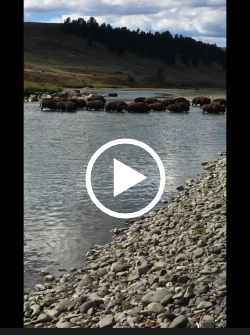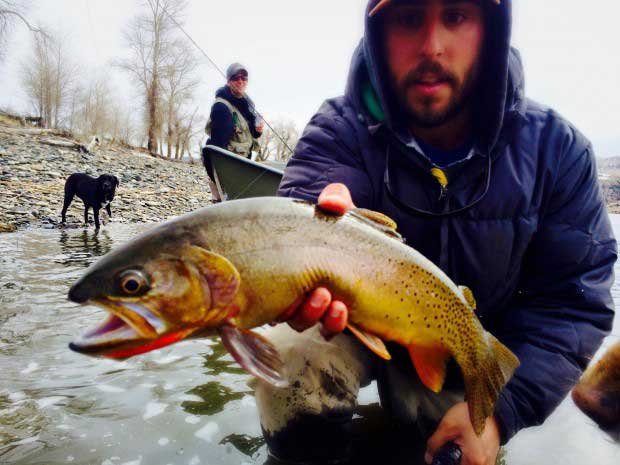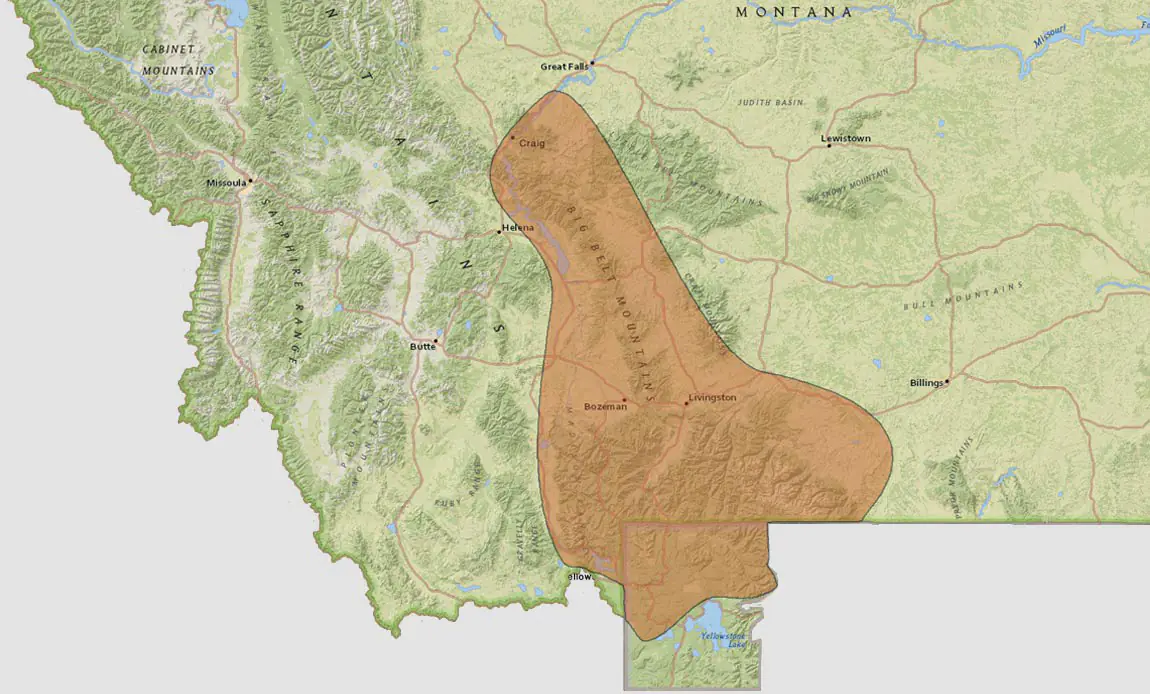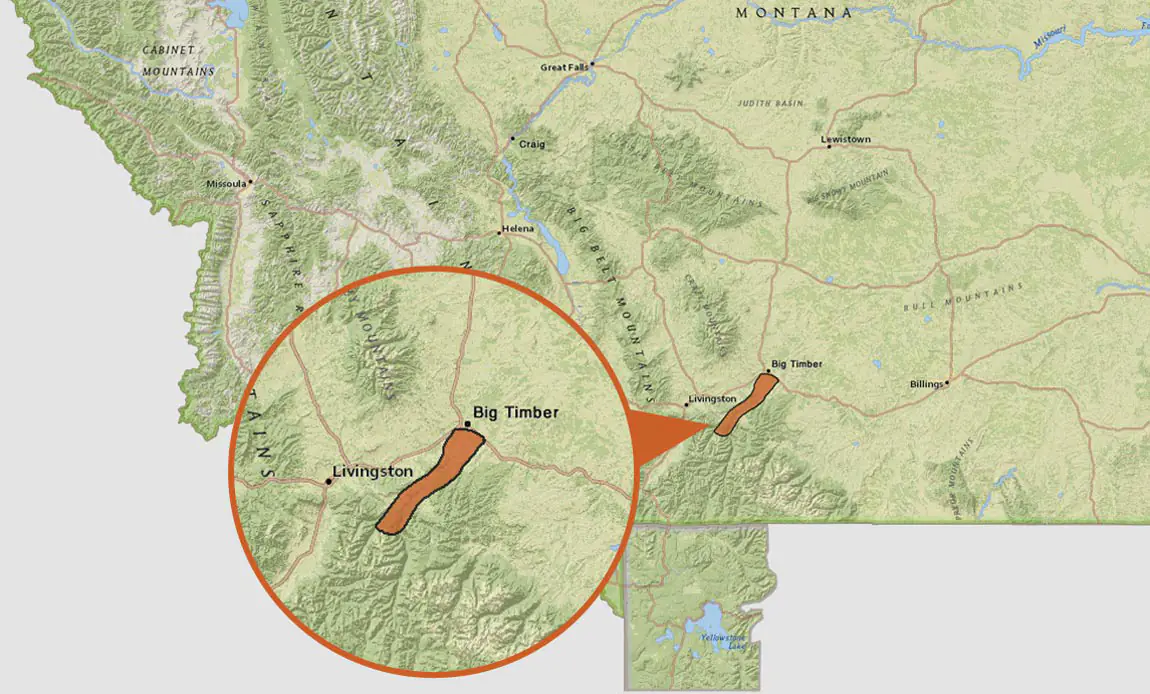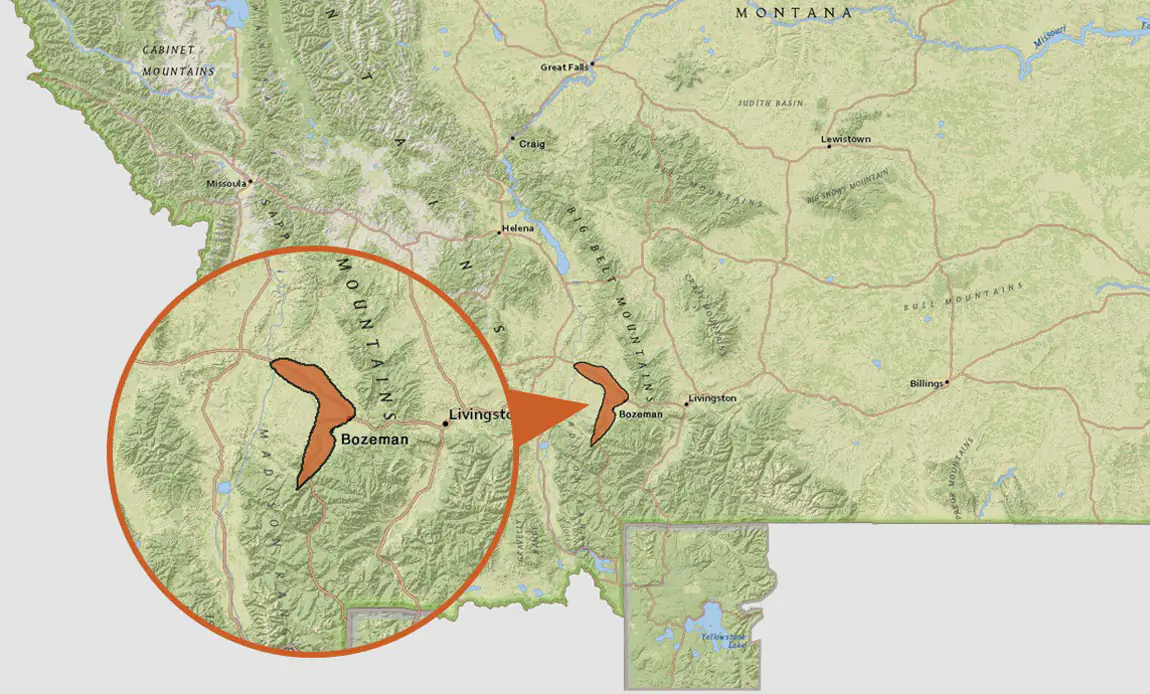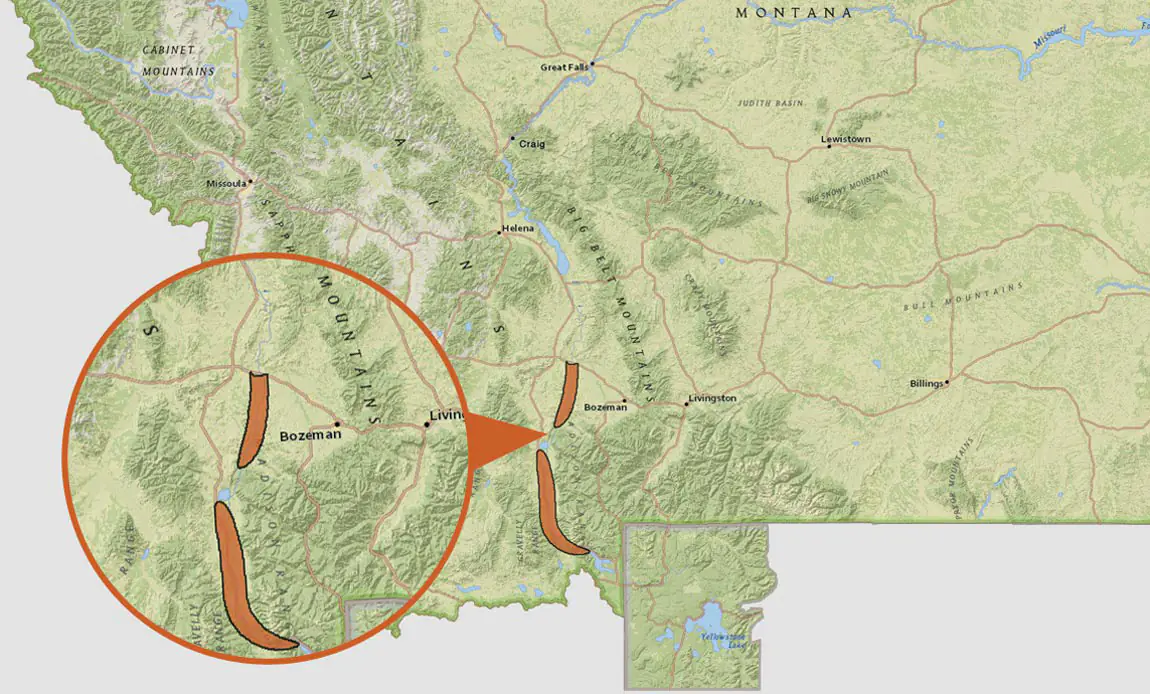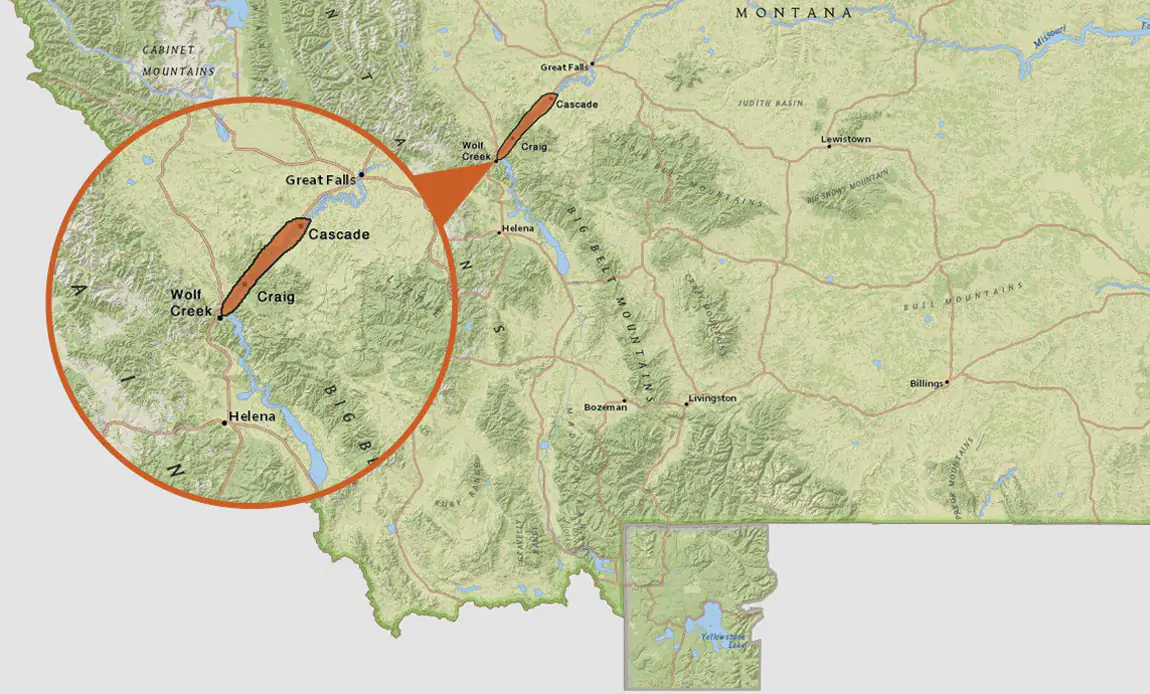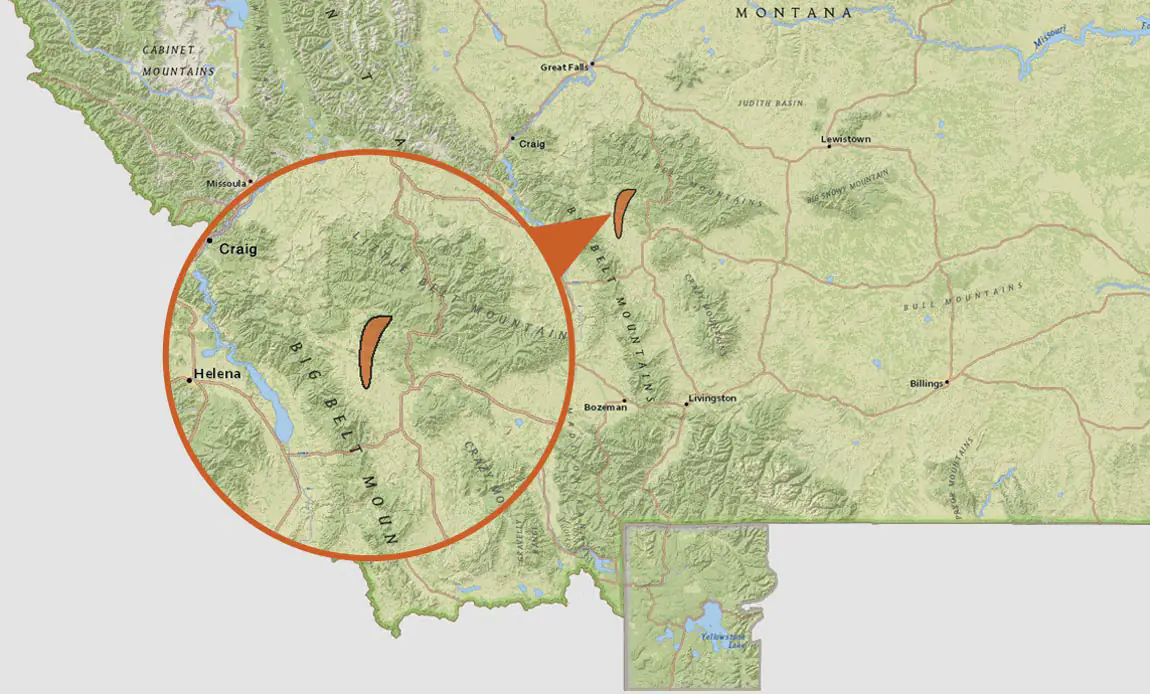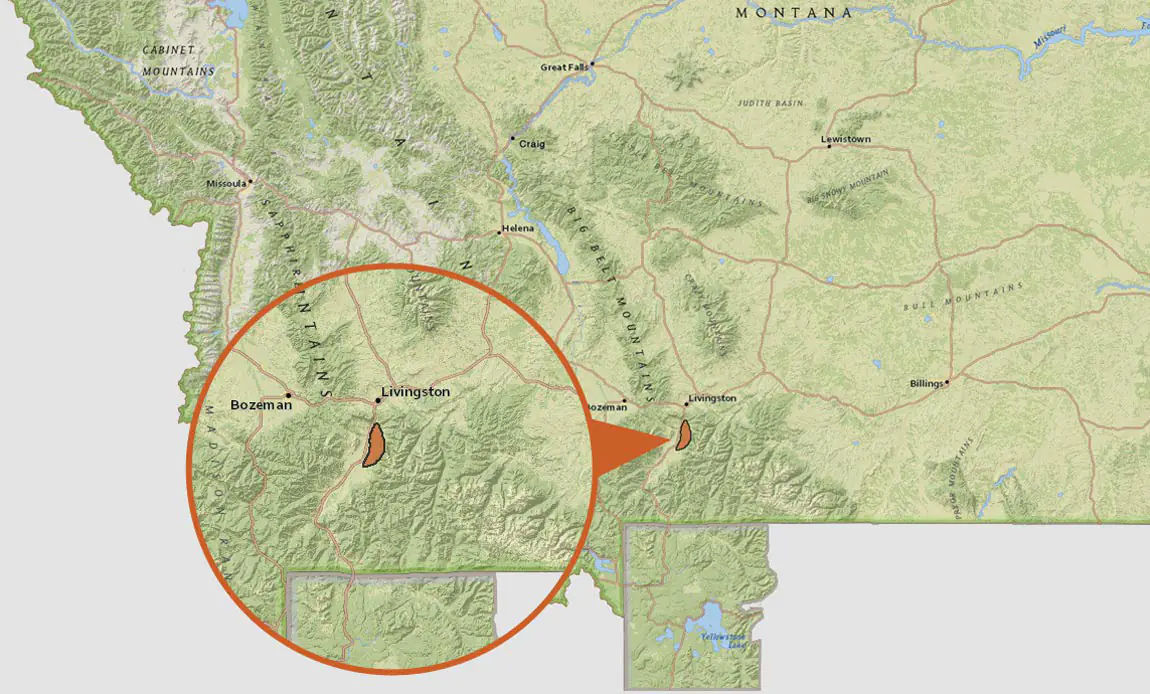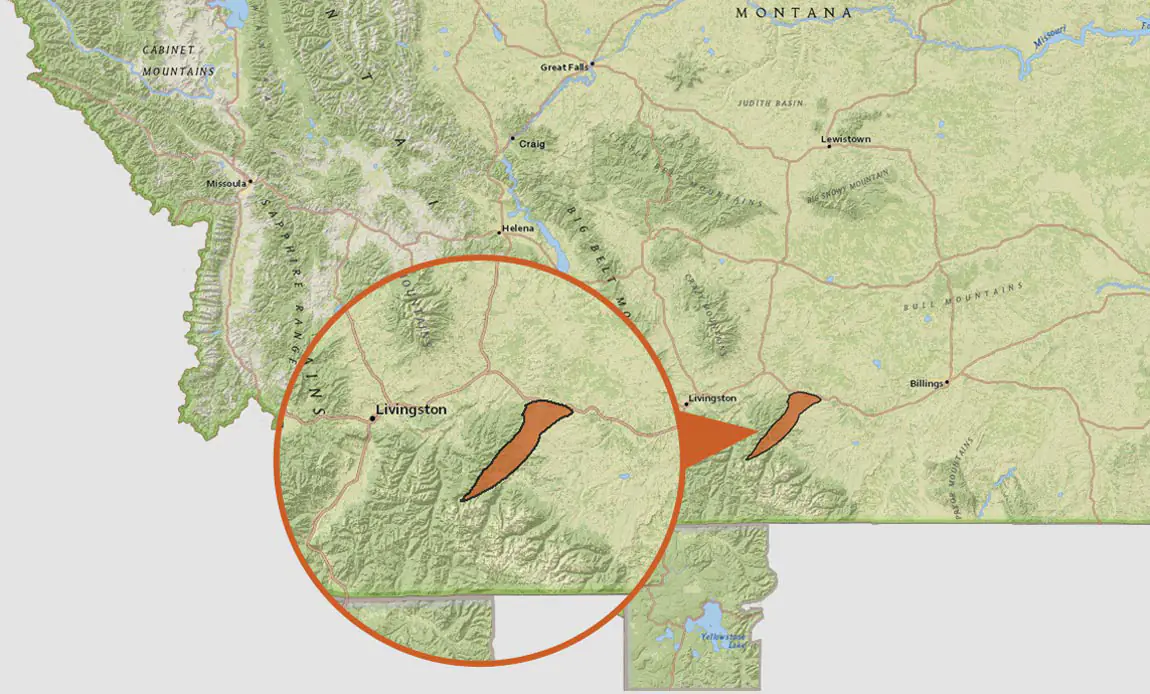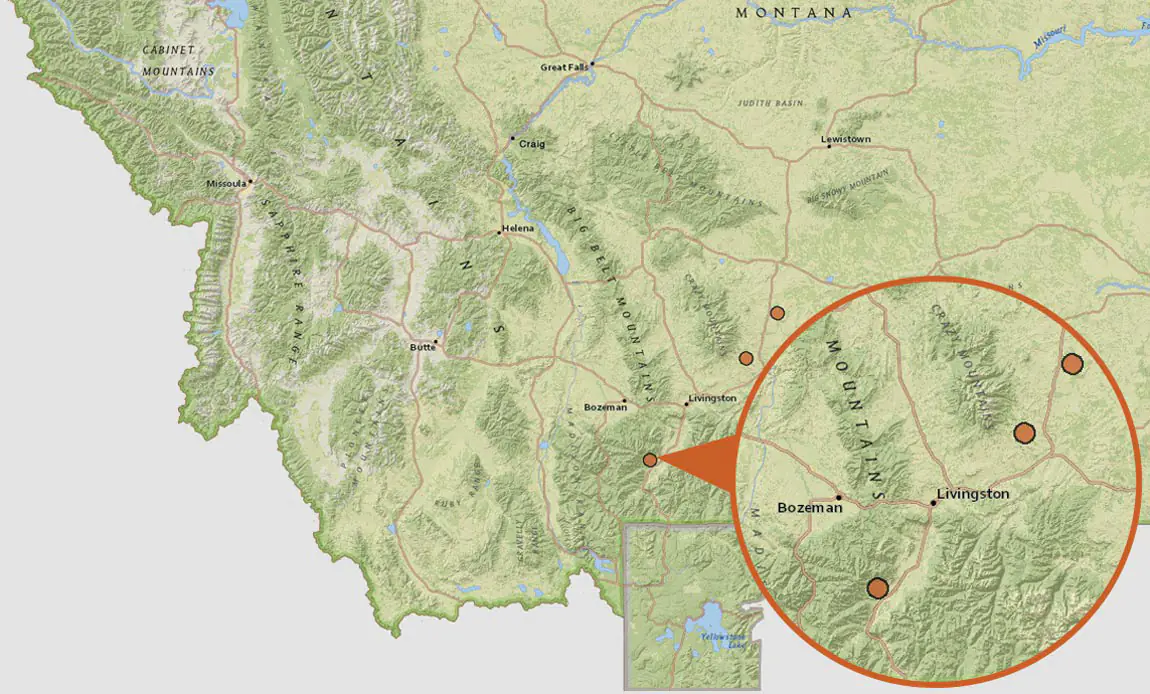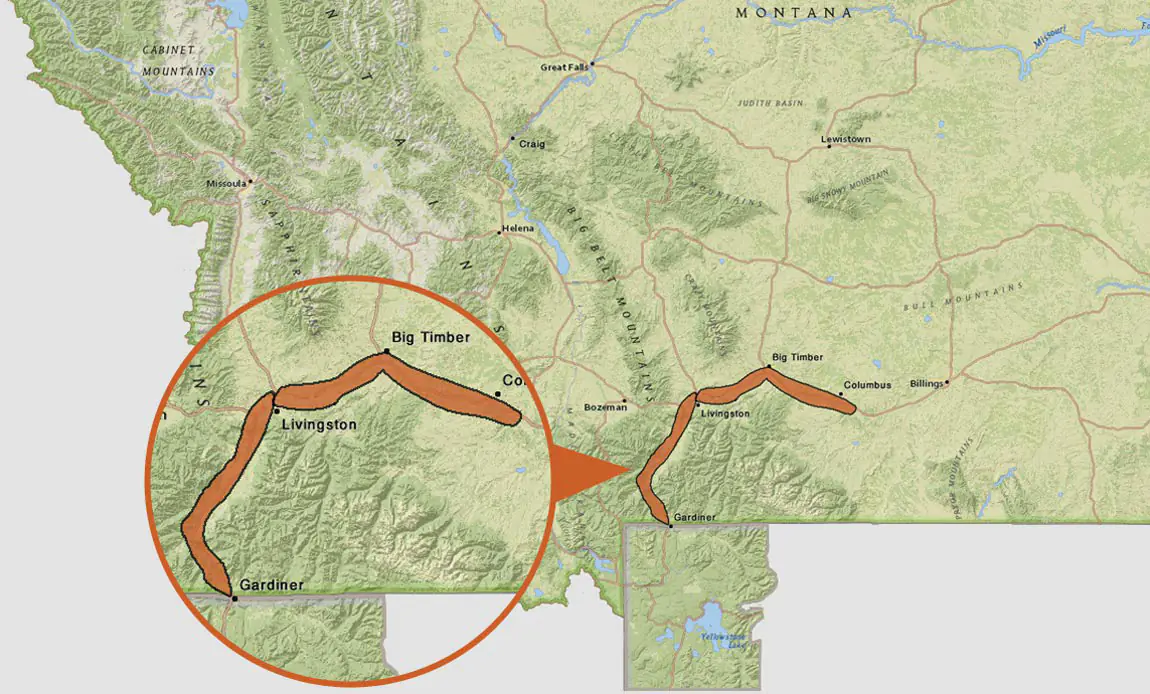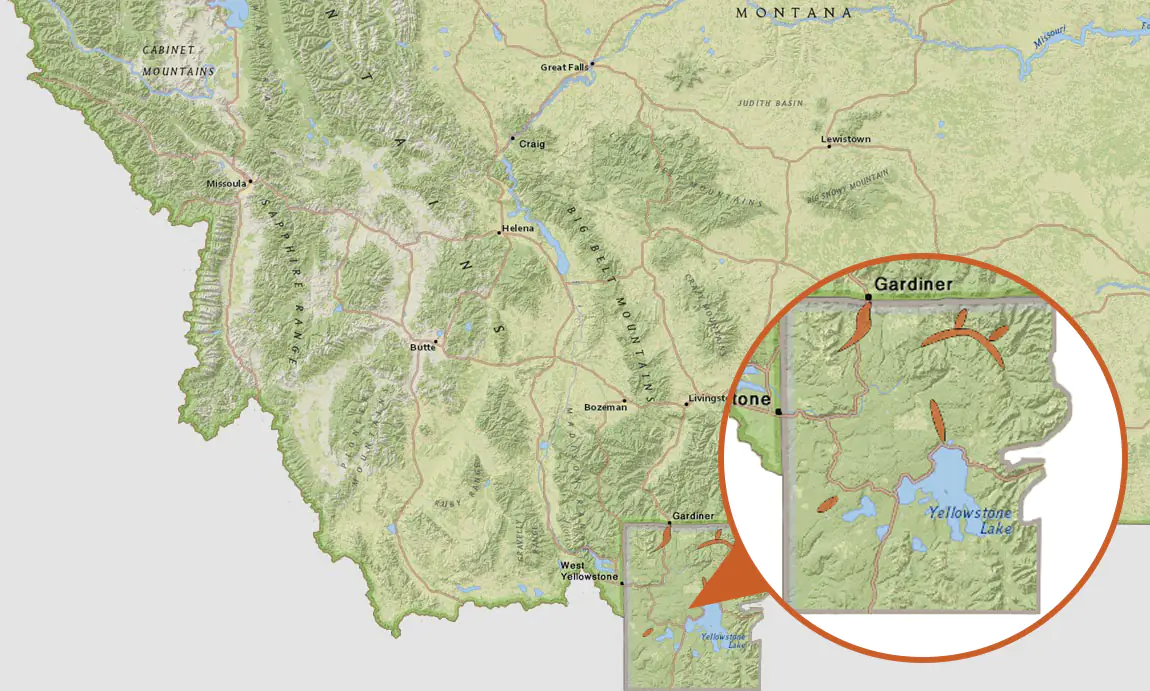It’s the time of year when anglers start to see those longer days and turn their thoughts to the Montana fly fishing season. At Montana Fly Fishing Guides we’d like to offer some insight based on our nearly 20 years experience in the area. We’ll support this with a look at current snow pack levels, combine it with long term temperature and precipitation forecasts. While this all turns into a best guess scenario we’ve got time in between tying flies and skiing, so let’s dig in to the details regarding the 2017 Montana fishing outlook.
The latest snow pack levels are looking good. If you’re unfamiliar with snow pack and how it relates to fishing here’s the simplified version. Most rivers in Montana rely on the amount of snow and more importantly the amount of water locked in the snow, or snow water equivalent (SWE). If there is too much SWE and the rivers may flood, too little and drought conditions set in. Looking at the SWE image below shows the Upper Yellowstone River drainage leading the charge at 128% of normal for this time of year. Most other drainages in Montana are at near normal levels, with the exception of the Smith area drainage.
Now on to the 3 month forecast, the National Oceanographic and Atmospheric Administration (NOAA) has predicted near normal temperatures for SW Montana in February, March & April. Interesting to note is the 33%-50% chance of below average temperature forecast for the majority of Montana. Combined with good SWE this forecast bodes well for those planning their Montana fly fishing trips.
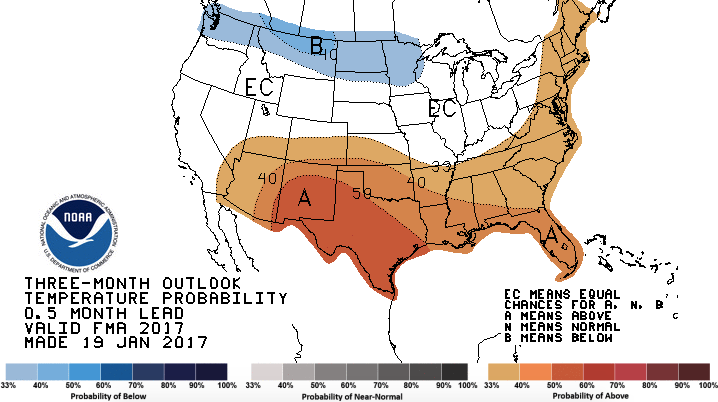
Finally NOAA has forecast a 33% chance of above average precipitation for SW Montana and the eastern part of Montana looks to have a 40% chance. Montana is not currently in any major drought status, and this forecast, if it comes to fruition, will further protect us from it. Again this data supports a good 2017 Montana fishing outlook, especially those looking to take advantage of good water temperatures throughout the Spring season.
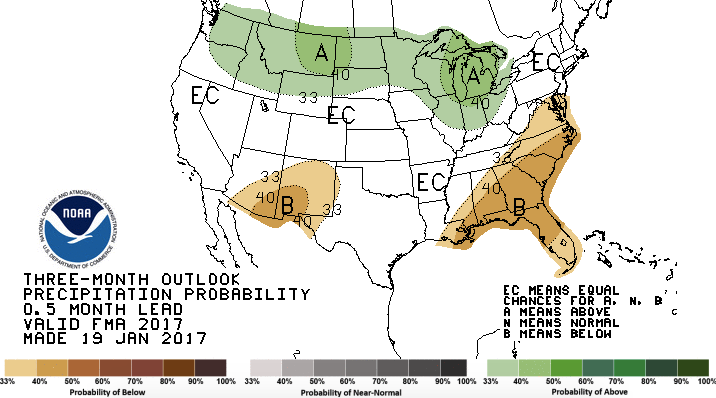
Now for the challenging part, putting all this data and forecasts together with our expertise to get you our prediction for the 2017 Montana fishing outlook. First off, the current SWE combined with average 3 month temperature and precipitation forecasts looks excellent. Our take on this leads us to believe that the spring fishing season is looking very good. Anglers wishing to avoid the peak season and experience fewer crowds should take advantage of this timeframe and good forecast. Excellent spring fishing can be found on the Yellowstone River in April, the Madison River in April, May & June, and the Missouri River in April, May & June.
How will this influence our annual spring run-off, well that’s a really tricky question. At this point in the season we think it’s too early to guesstimate the start or length of run-off. Montana weather is tough enough to forecast from day to day, let alone 4 or 5 months out. However, at this point if we were pressed it looks as though run-off on many of our rivers should start close to their normal dates. For example the Yellowstone River typically starts run-off near the first week of May. The current data doesn’t seem to support an early, late or extended run-off.
To summarize the current data strongly supports an excellent 2017 Montana fishing outlook, especially for the spring season. We’ll revisit this in a few months to update the main summer season. In the meantime think snowy thoughts, hit the tying bench and feel free to contact us or comment below with any questions or thoughts on the 2017 Montana fishing outlook.


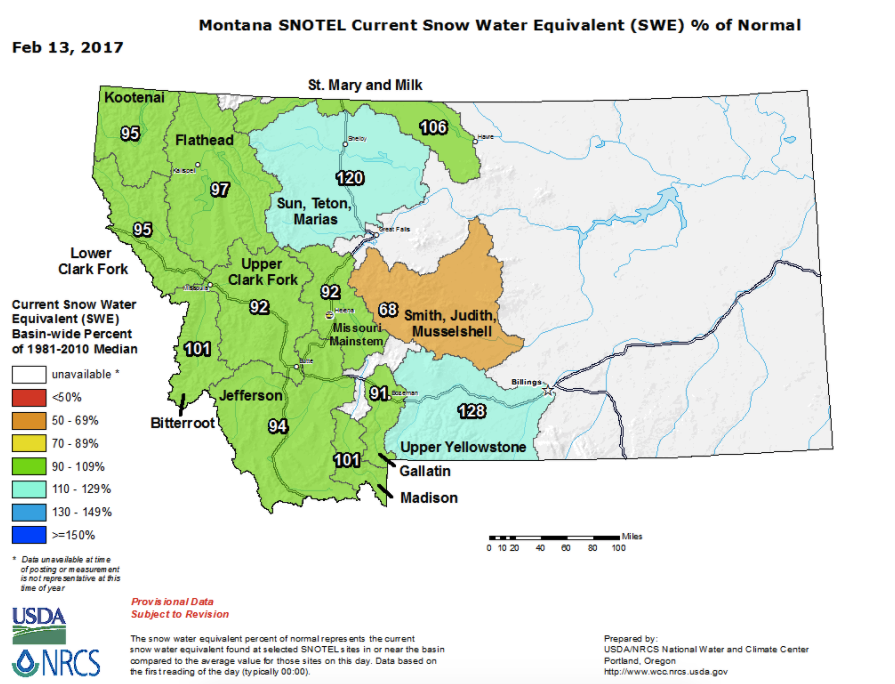
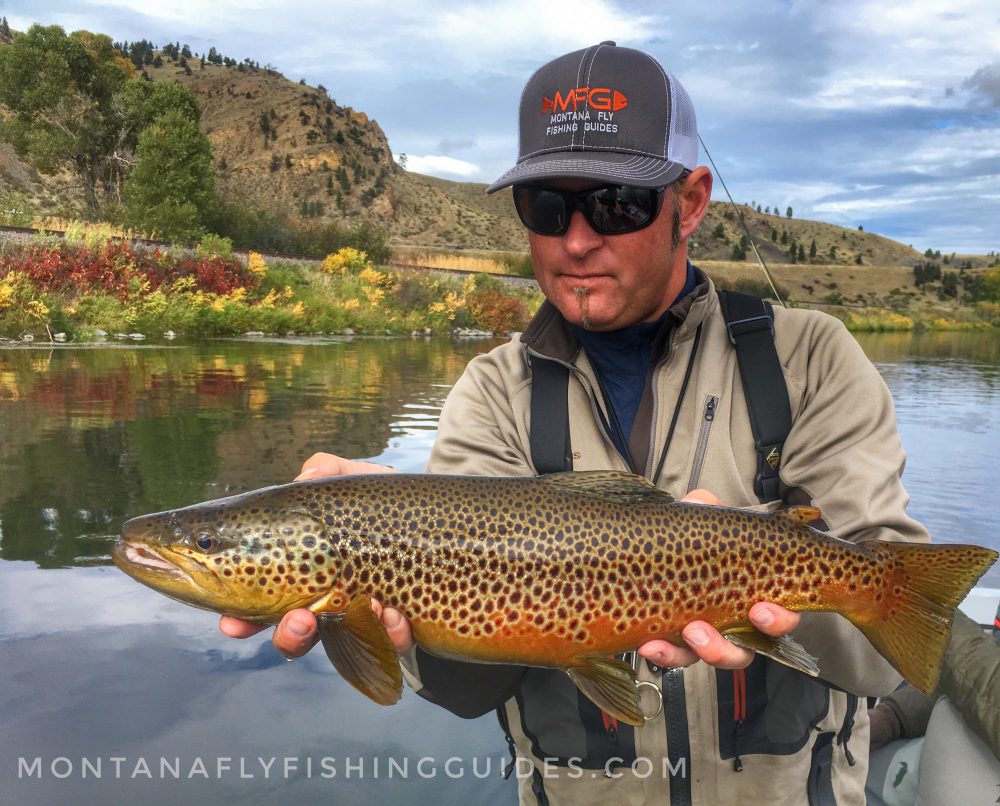
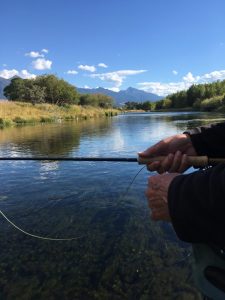 To summarize the Yellowstone River closure of 2016 – few trout were effected and the majority of fishing restrictions were lifted within a couple weeks time. How did this effect fishing? Other than some limited float fishing options for anglers it really wasn’t much of an issue. At Montana Fly Fishing Guides, llc. we take you to the best possible fishing – so as the Yellowstone hadn’t been the best option in the week leading up to the closure we’d already started taking anglers to other waters that had been fishing well. This
To summarize the Yellowstone River closure of 2016 – few trout were effected and the majority of fishing restrictions were lifted within a couple weeks time. How did this effect fishing? Other than some limited float fishing options for anglers it really wasn’t much of an issue. At Montana Fly Fishing Guides, llc. we take you to the best possible fishing – so as the Yellowstone hadn’t been the best option in the week leading up to the closure we’d already started taking anglers to other waters that had been fishing well. This 
